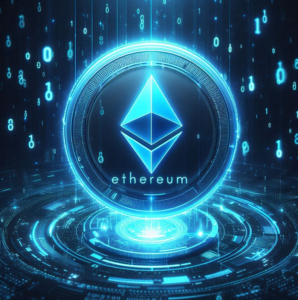Have you heard of Ethereum 2.0?
Learn what Ethereum 2.0 is and how it impacts cryptocurrencies

If you’ve been following the world of cryptocurrency, you’ve probably heard about Ethereum. But what about “Ethereum 2.0” or “Eth2”? This isn’t just an update; it’s a fundamental transformation designed to make Ethereum more scalable, secure, and sustainable. Let’s dive into what this evolution means for everyone, from casual observers to active participants.
What is Ethereum and Why Does it Need an Upgrade?

Ethereum is a decentralized, open-source blockchain with smart contract functionality. While Bitcoin is primarily a digital currency, Ethereum is a platform that allows developers to build and deploy decentralized applications1 (dApps) across a vast ecosystem, from DeFi (Decentralized Finance) to NFTs (Non-Fungible Tokens).
However, the original design of Ethereum, known as Ethereum 1.0, faced significant challenges:
- Scalability Issues: As the network grew in popularity, it became congested, leading to slow transaction speeds and high “gas fees” (transaction costs).
- Energy Consumption: Like Bitcoin, Ethereum 1.0 used a “Proof-of-Work” (PoW) consensus mechanism, which is energy-intensive.
- Security Concerns: While robust, PoW has theoretical vulnerabilities that a new design aims to address.
These limitations prompted the development of Ethereum 2.0, now officially known as “The Merge” and subsequent upgrades.
The Merge: Transitioning to Proof-of-Stake for a Greener Future
The most significant and talked-about part of the Ethereum upgrade was “The Merge.” This was the transition from the energy-intensive Proof-of-Work (PoW) consensus mechanism to a more environmentally friendly “Proof-of-Stake” (PoS) system.
In PoW, “miners” use powerful computers to solve complex puzzles to validate transactions and add new blocks to the blockchain. This consumes vast amounts of electricity.
In PoS, “validators” (formerly “miners”) “stake” (lock up) their Ether (ETH) as collateral to have the chance to validate transactions. If they act dishonestly, they can lose their staked ETH. This mechanism significantly reduces energy consumption, making Ethereum a much more sustainable blockchain. The Merge fundamentally changed how new blocks are added to the Ethereum blockchain.
Sharding: Enhancing Scalability and Transaction Speed

While The Merge tackled energy consumption, the next major component of Ethereum’s upgrade roadmap is “sharding.” Think of sharding like adding more lanes to a congested highway. Instead of processing all transactions sequentially on a single blockchain, sharding will break the Ethereum blockchain into multiple smaller, interconnected chains called “shards.”
Each shard will be able to process transactions and smart contracts in parallel. This will dramatically increase the network’s capacity, leading to:
- Higher Transaction Throughput: More transactions can be processed per second, reducing congestion.
- Lower Transaction Fees: Increased capacity typically translates to lower “gas fees” for users.
- Improved User Experience: Faster and cheaper transactions make dApps more accessible and enjoyable to use.
Sharding is expected to be implemented in phases following The Merge, further solidifying Ethereum’s position as a leading platform for decentralized applications.
What Does the Ethereum Upgrade Mean for Users and Investors?
For the average user or investor, the implications of these upgrades are largely positive:
- Reduced Environmental Impact: For those concerned about the carbon footprint of cryptocurrencies, the move to PoS is a huge step forward.
- Faster and Cheaper Transactions: Once sharding is fully implemented, interacting with dApps and sending ETH will become much more efficient and affordable.
- Increased Network Security: The PoS mechanism, combined with sharding, is designed to enhance the overall security and resilience of the network.
- Potential for Wider Adoption: A more scalable and sustainable Ethereum could attract more developers and users, leading to further innovation and growth in the decentralized space.
For holders of Ether (ETH), your existing ETH automatically transitioned with The Merge; no action was required on your part. The value of ETH is now underpinned by a more efficient and sustainable network.
The Road Ahead: Continuous Evolution of the Ethereum Ecosystem

The journey of Ethereum 2.0 (now just the ongoing evolution of Ethereum) is a testament to the continuous innovation in the blockchain space. While The Merge was a monumental achievement, the development doesn’t stop there. Future upgrades, including sharding and other enhancements, will continue to refine the network, making it even more robust and capable.
Understanding these changes is key to appreciating the future potential of Ethereum as a foundational layer for the next generation of the internet. As the blockchain ecosystem continues to mature, Ethereum’s commitment to scalability, security, and sustainability positions it at the forefront of this digital revolution.





